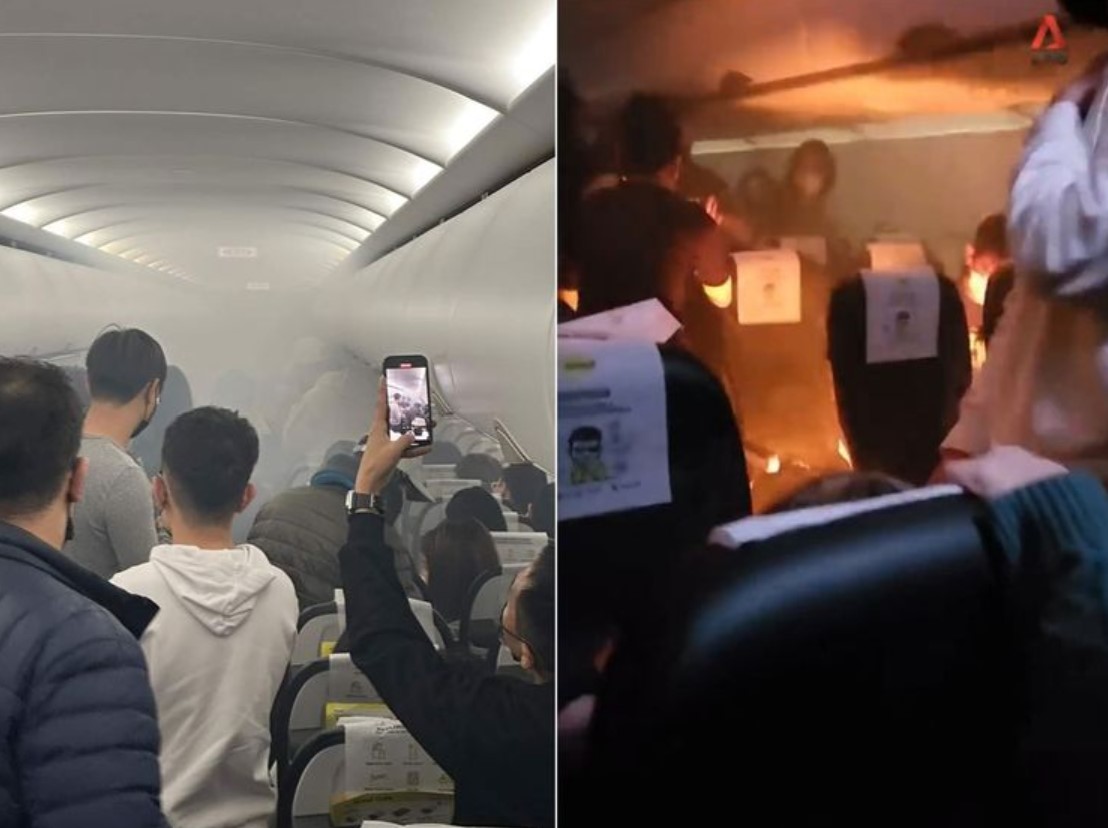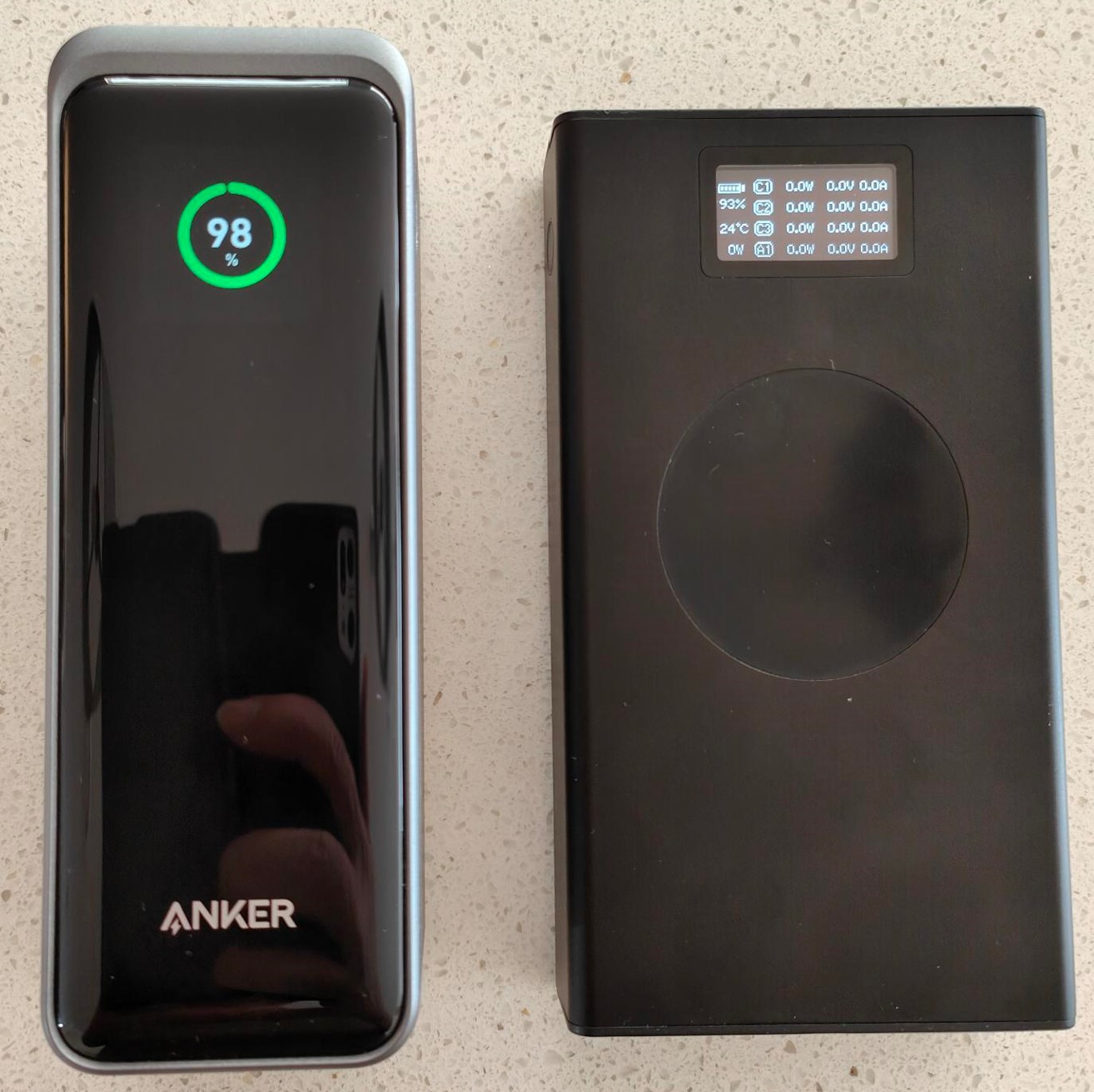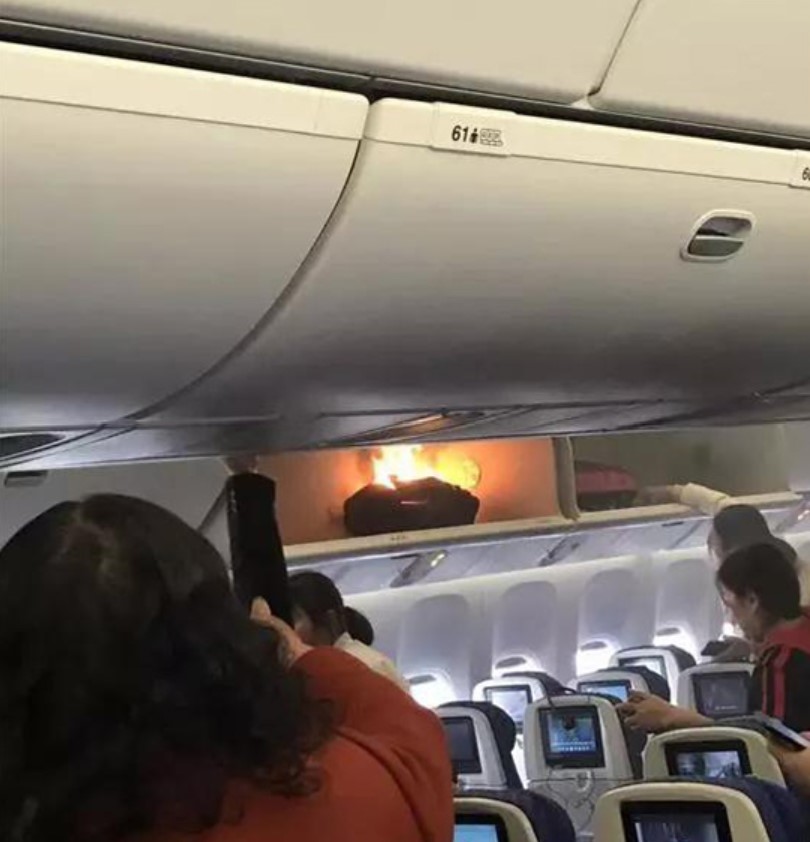Planes and power banks – the rules are now strictly enforced following a slew of Lithium-ion battery recalls and fires. Any Lithium-ion battery over 100Wh cannot be carried as cabin luggage or in the cargo bay.
Urgent Update 15/3/25)
Travellers are not allowed to use the Lithium-ion battery banks to charge their devices, nor charge the banks using onboard USB ports. Airlines that have announced these restrictions include:
- Singapore Airlines
- Scoot
- Thai Airways
- South Korean Airlines
- EVA Air
- China Airlines
- And many more will be implementing the ban shortly
Check directly with your airline before you fly, but here are the general rules.
- Portable power banks must still be packed in your carry-on luggage, even if you can’t use them while flying.
- They are not permitted in checked baggage.
- Power banks up to 100Wh don’t require you to notify the airline.
- From 100Wh to 160Wh, airline approval is required. It is suggested that they travel in the original box, which clearly shows the total wattage.
- Above 160Wh is not allowed on flights.
Why? Power bank fires are a rapidly increasing flight risk
And slew it is – more than 60 Lithium-ion fires on US airlines alone in 2022, over 80 in 2023 and over 30 so far in 2024 from phones, laptops, power banks, and now Vapes. Some were extremely serious, as passengers put these in the cargo as luggage.
The Federal Aviation Administration (FAA) and Transport Security Administration (TSA) set the rules that all airlines implement. The largest approved cabin (carry-on) baggage power bank is 100Wh (Watts for an hour—think of this as capacity—a bucket of energy). You can have up to two of these.
With airline approval (many will not), up to two Lithium-ion power banks from 101-160Wh may be allowed as cabin baggage. Some airlines require dangerous goods labelling, but not for in-flight use. This capacity now includes newer laptops that may exceed 100Wh batteries. It also applies to appliances, tools, and other items with 100+Wh batteries.
Power banks are dangerous goods over that capacity. Lithium-ion batteries cannot be transported as cargo luggage.
See the FAA Batteries Carried by Airline Passengers Guide

How to calculate a power bank capacity
As a rule, power banks up to 25,000mAh (milliamp hour) are 100Wh or less. A 10,000mAh power bank is about 40Wh. Most modern power banks will have the Wh capacity printed on them.
For example, the Anker Prime 27650mAh 250W power bank A1340 – a marathon runner (currently the largest TSA-approved power bank), uses 3.85V x 3.95A x 15.2W x 7 cells = 106.45W. Even though it is slightly over the 100Wh limit, It has approval because it also uses safer and more expensive Li-Po pouch batteries with 2000+ charge cycles.
Please don’t get confused by the total watts it can concurrently output. The Anker example above shares a 250W output over its ports (a maximum of 100W per port). This has nothing to do with battery capacity.
CyberShack’s view – Planes and power bank rules are the tip of the Lithium-ion iceberg.
Lithium-ion power banks use multiple low-cost 186500 (18 x 65mm) or 21700 (21 x 70mm) cylinder batteries. These are the most energy-dense – more Wh from smaller batteries. This type of cell is a predominant cause of Lithium-ion battery fires.

Some more educated power bank makers realise that this cannot continue and are moving to Li-PO pouch batteries (enabling different designs from the typical power bank brick style) with far less propensity for thermal runaway. Anker’s Prime series (L) is evidence of that, but it is about 25%, thicker and heavier than the Lithium-ion equivalents (R)

The safest technology is Lithium Iron Phosphate (LiFePO4 or LFP). It has a lower energy density (it requires up to 50% more battery cells) but is highly safe with low toxicity. The better ones have 3000+ charge cycles. This technology is in better portable power stations, as size and weight are not so much an issue.
The Wh (Watt Hours) enforcement of planes and power banks is wise and long overdue. Imagine what a Lithium-ion thermal runaway (unstoppable) fire on a plane could do.
The UK Government has now banned e-mobility devices on trains, ferries and buses for the same reason.

Further reading
Large-capacity Lithium-ion batteries will end in death
Is there a safe way to charge Lithium-ion batteries?
Does insurance cover a lithium-ion battery fire? Maybe and probably not
Lithium-ion e-scooters, e-skateboards, and e-bikes banned on UK on public transport
This device costs over A$10,000 and is the only 100% Lithium-Ion fire containment system available.








6 comments
Neil Hodges
Ban power banks on planes completely. They aren’t really needed. You can charge in a car or at a hotel at airports etc.
Ray Shaw
Lithium-ion to 100W capacity (laptop and power banks) are relatively safe despite the occassional occurance of fires. You would be preventing smartphones, headphones, and laptops and that is simply not practical. What needs to be done is that all planes should be equipped with specialist portable fire safes for laptops, etc where quick action can prevent a disanster. And let’s face it planes need to be fireproofed as well.
Neil Hodges
Lithium Ion Batteries should not be allowed on planes ever. The rule should read something like, No Lithium Ion Batteries allowed as cargo or carry on. No excuses, no reason, just NO.
Ray Shaw
Lithium-ion to 100W capacity (laptop) are relatively safe despite the occassional occurance of fires. You would be preventing smartphones, headphones, and laptops and that is simply not practical. What needs to be done is that all planes should be equipped with specialist portable fire safes for laptops, etc where quick action can prevent a disanster. And lets face it planes need to be fireproofed as well.
Nick Dunbar
Hi Ray! Thanks for the great information here. We have the only Solution for lithium battery fires on airplanes. We are the only UL5800 certified containment device and I would love the opportunity to tell you about it and hear your feedback. Lithiumfireguard.com
Ray Shaw
Interesting – I have linked to your video tutorial.